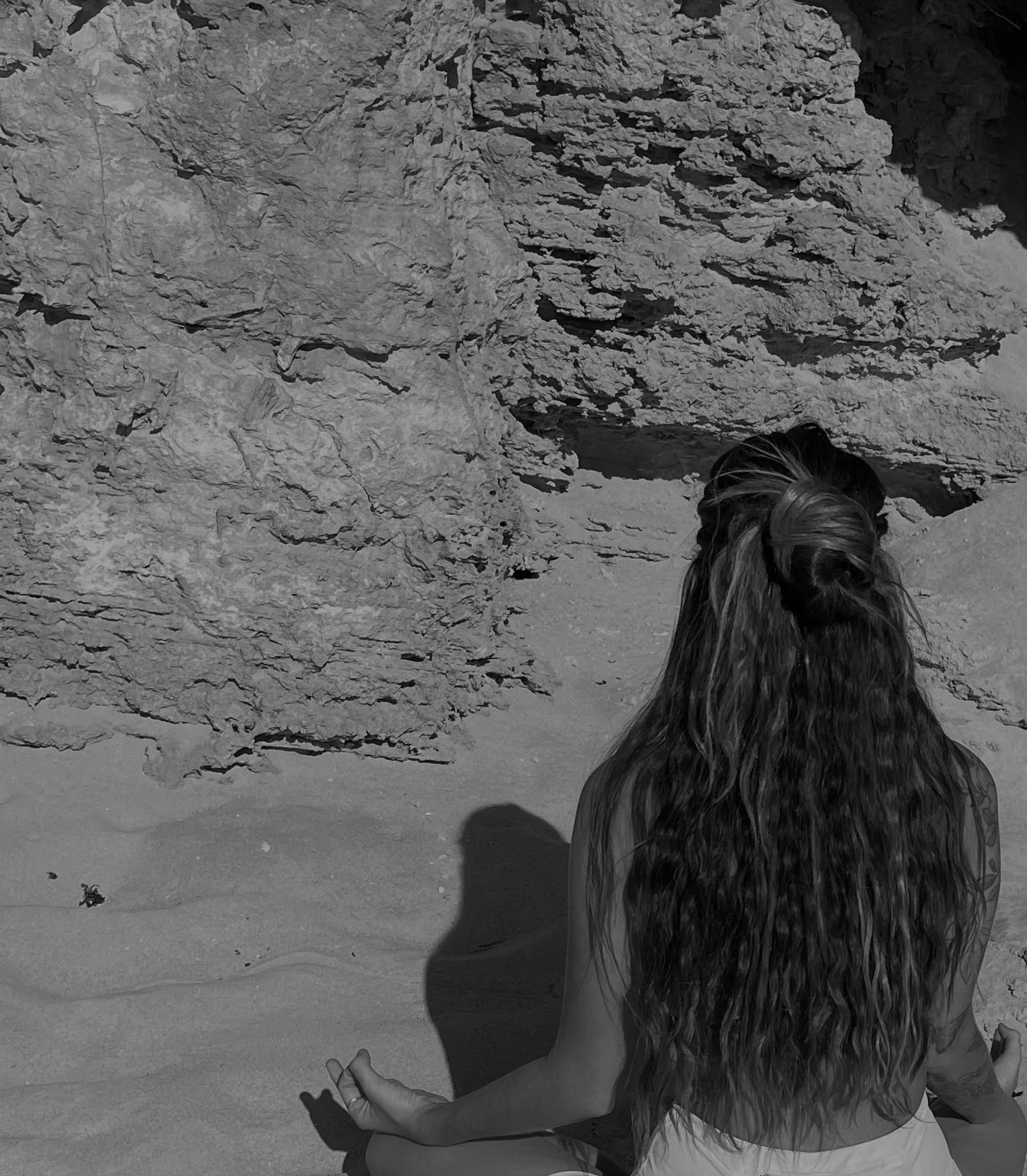The Art of Meditation
Dhyana - Journey of the mind
To meditate is to practice the slowing of the mind. An almost impossible task in the society we exist in, however maybe more necessary than ever.
In a world that often depletes our concentration and challenges our nervous system, meditation leads us back to our inner voice and our sense of calm.
Meditation itself is not an action one can do. Meditation is a state of being which arises through the combination of several other acts.
Origins
It is impossible to know the precise origin of meditation however what we do know has it has existed in many different forms for for much longer that we can fathom, it is ingrained in the evolution of what it is to be human. The ability to sit with oneself has birthed the creation of language, culture, philosophy, civilisations.
What we do know is the earliest written records of meditation exist in the Hindu vedas dating back to 1500BC. Since then, the practice of meditation has been recorded within many cultures including Taoist China, Buddhist India and Judaism.
Although meditation has taken on many forms throughout history, the meditation we see most commonly now is mindfulness meditation. The ability to centre the minds awareness as a way of clearing the mind from distraction. Mindful meditation is believed to have stemmed from the Yogic meditation. The early teachings of Yoga had little focus on physical postures only using physical asanas to prepare the body for stillness to allow for meditation or Dhyana, the seventh limb in the 8 limbs on yoga.
Why Meditate
The benefits of meditation have been studied in depth and have been proven to reduce stress, increase attention span and enhance emotional awareness. The ability to sit with oneself is a skill which we once may have taken for granted is becoming increasingly rare. The world now consists of so many forms of distraction for the mind to jump too, our ability to concentrate has diminished. This constant distractionary lifestyle although not intentional can negatively impact a person’s life leading to a lack of patience, lack of emotional awareness and increased anxiety.
Allowing yourself to exist distraction free for the time spent in meditation is an impactful act of kindness on the mind. Encouraging the slowness of meditation allows you to become more aware of the emotional needs which may be arising, allowing you to work through patterns, fears and emotional blockages.
Emotional awareness and stress relief are two of the main reasons the modern world have taken an interest in the practice of meditation. A busy world craves a quiet mind and through the art of meditation a greater balance can be created. The skill of emotional awareness is proven to create a happier human by reducing reactivity in stressful or negative situations as well as increasing the ability for compassion and empathy for loved ones leading to stronger relationships. This skill empowers a person to take accountability for their life which in turn encourages more logical, thought-out and aligned actions.
How to Meditate
When we think of meditation often we can imagine sitting cross legged in a quiet room with our eyes closed and although this may be one approach, meditation can exist in many forms and does not need to be executed in one particular way. Meditation can exist in a multitude of settings and practices.
Meditation has transformed throughout history and is still ever changing. There are many forms including moving meditation such as; walking meditation or tai chi, mantra meditation, the repeated chanting of mantra of prayer to focus the brain, transcendental meditation which involves the repetition of a mantra inside the mind and visualisation meditation which uses the imagination to draw focus away from the external and into the mind.
To allow the mind to reach this meditative mindset we often use Mindfulness. Mindfulness is the ability to concentrate the minds focus in a sensory experience. This is also explored within the 8 limbs of yoga as the processes that we find before Dhyana (meditation). These include;
Asana (Posture)
Asana today is often thought of as the practice of yoga , the postures and sequences that we now know yoga to be are important in preparing the body for the stillness of meditation, moving the body allows the mind to become less restless.
Pranayama (Breathwork)
Pranayama refers to the manipulation of the breathe to alter your state of being, this can be to calm or to energize the body.
Pratyahara (Sense withdrawal)
Pratyahara refers to mind focus on the senses by drawing inward and allowing our minds to become so absorbed it can ignore external distraction.
Dharana (Focused concentration)
Dharana is the last limb before we reach Dhyana and refers to the ability to focus the minds concentration, this can be explored through such techniques as candle gazing, visualisation and focus on breath. The practices of Dharana are often confused with meditation itself however it is actually the state of mind that stems from this which is Dhyana, meditation.
Meditation is a practice and with all practices rarely comes easy in the beginning. Turning our attention inward to the inner workings of the mind can be daunting, difficult and sometimes just out right boring, however if practicing frequently the art of meditation can transform ones mindset allowing for a deeper connection to self, creation and kindness.
Written by Jaya cowan.
